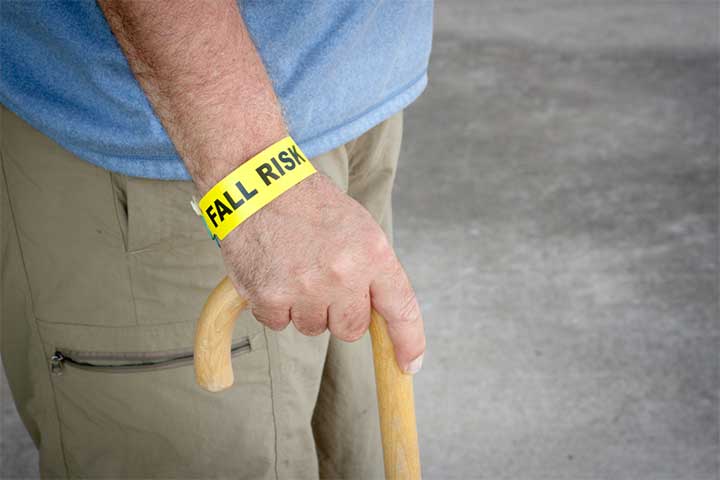Pam Cipriano to receive ANA’s Distinguished Member Award
American Nurse Today Editor-in-Chief Pamela Cipriano, PhD, RN, FAAN, will receive the Distinguished Member Award from the American Nurses Association (ANA) in June, in recognition for her outstanding leadership, participation in, and contributions to ANA purposes.
Dr. Cipriano has provided more than 30 years of continuous service at both the state and national level to ANA and the American Academy of Nursing. As chief clinical officer and chief nursing officer at University of Virginia (UVA) Health Systems, she oversees more than 3,000 employees. The author of multiple articles for nursing textbooks and journals, she also serves as a clinical associate professor at the UVA School of Nursing. Dr. Cipriano recently led the UVA Health System to achieving Magnet Recognition, nursing’s highest honor bestowed by the American Nurses Credentialing Center.
New guideline helps clinicians identify patients at high risk for falling
The American Academy of Neurology has released a guideline to help clinicians determine which patients are at increased risk for falling. To develop the guideline, researchers conducted a 25-year literature review to identify neurologic conditions associated with an increased risk. They found that patients with dementia, stroke, or gait and balance disorders are at greatest risk; those with Parkinson’s disease, peripheral neuropathy, lower extremity weakness or sensory loss, and substantial loss of vision also have a high risk. Because a history of falls is one of the best predictors of future falls, clinicians should ask patients about falls during the past year. Also, they should consider using mobility testing and screening measures that assess a patient’s ability to stand from a sitting position. www.neurology.org/cgi/content/abstract/70/6/473
Probiotics increase mortality in patients with severe acute pancreatitis
A new study finds that in patients with severe acute pancreatitis, use of probiotics (dietary supplements containing potentially beneficial yeast or bacteria) to decrease infectious complications raises mortality. In the study, probiotic prophylaxis with a combination of probiotic strains (Lactobacillus, Lactococcus, and Bifidobacterium species) led to a twofold increase in the death rate compared to a placebo group. www.thelancet.com/journals/lancet/article/PIIS014067360860207X/abstract?iseop=true
Discovery paves the way for a preeclampsia blood test
A blood test for preeclampsia may be just around the corner. British researchers have discovered that plasma from preeclamptic women has higher levels of amino acids. Currently, preeclampsia diagnosis hinges on blood pressure measurements and urine protein tests in women beyond 20 weeks’ gestation. The researchers hope testing the blood for chemical changes could identify at-risk women much earlier and lead to better management of the condition. (For more information on preeclampsia, see the February issue of American Nurse Today.) http://news.bbc.co.uk/2/hi/health/7241001.stm
Study finds high supplement use among cancer patients
Cancer patients and survivors consume more vitamins and other supplements than the average person. In new research, 64% to 81% of cancer survivors said they used vitamin or mineral supplements and 26% to 77% said they used multivitamins. In contrast, about half of American adults use dietary supplements and 33% use multivitamin/multimineral supplements. Breast cancer survivors reported the highest supplement use; prostate cancer survivors, the lowest. What’s more, only about one-third of physicians are aware their cancer patients are using supplements. http://In new research, 64% to 81% of cancer survivors said they used vitamin or mineral supplements and 26% to 77% said they used multivitamins. http://blogs.cooperhealth.org/ehealth/2008/03/01/study-on-vitamin-use-among-cancer-survivors-brings-patients-doctors-to-task/
Culture gap may contribute to healthcare disparities
A growing number of studies show that small cultural differences (mostly between male white physicians and their culturally diverse patients) could be contributing to healthcare disparities. Some experts believe cultural competency training could improve physician-patient communication. In 2005, New Jersey became the first state to require physicians to receive cultural-competence education. However, no study shows that cultural competency training reduces disparities. Some practitioners believe the answer lies in one-on-one bonding with patients of diverse cultural backgrounds—not cultural sensitivity courses.
Does aggressive diabetes treatment increase the risk of death?
Two recent studies of intensive treatment of patients with type 2 diabetes show conflicting results. A U.S. trial known as ACCORD found a slightly higher mortality risk in patients whose blood glucose level had decreased to near normal through aggressive blood-glucose measures. However, interim results from ADVANCE, a much larger international trial, found no evidence that such treatment raises the death risk. The American Diabetes Association points out that the studies weren’t identical, although it was unclear whether that could explain the discrepancy. http://archive.knoxnews.com/entertainment/life/aggressive-diabetes-treatment-may-increase-death-risk-ep-412112748-359998411.html
Hypertension rates increase for women, decrease for men
Hypertension rates increase for women, decrease for men
Hypertension rates increase for women, decrease for men
During the first part of this decade, the rate of uncontrolled hypertension rose about 5% for American women but continued to decline slowly for American men. Southern states had the highest incidence of uncontrolled hypertension, whereas northeastern and Midwestern states had the lowest.


















